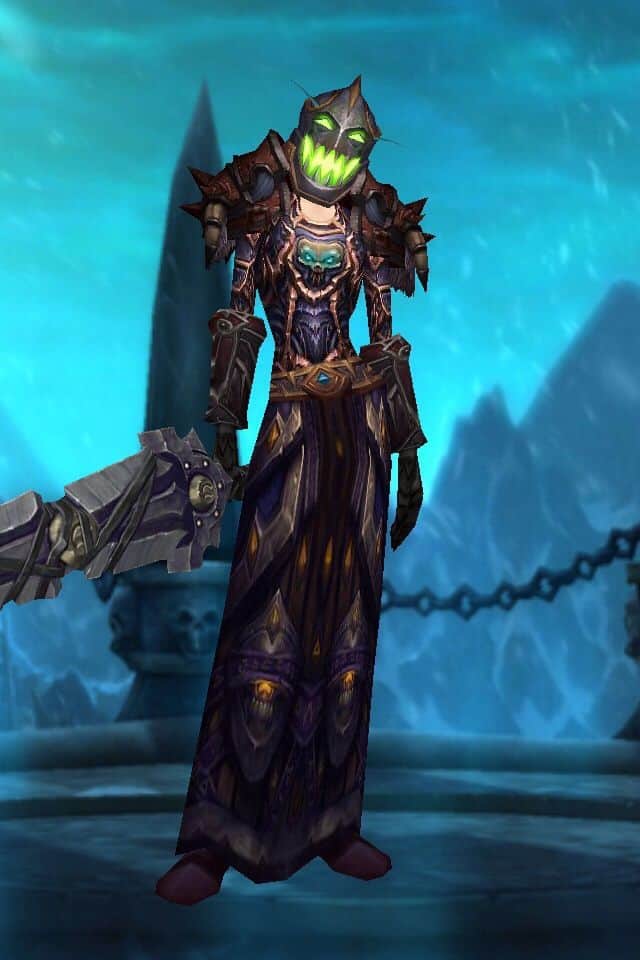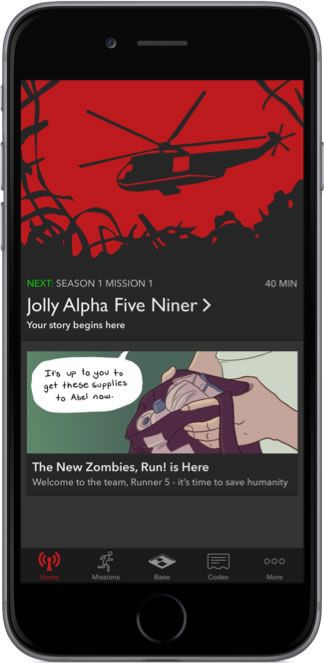It wasn’t long after we all acquired smartphones that mobile app developers helped us improve our diets, pick up new exercise routines, and harness the power of mobile devices to make us all fit. These days, there’s no need to guesstimate your calories when MyFitnessPal’s database of over five million foods can help you track your intake accurately, all from your smartphone. (Accidentally swallow a bug while riding your motorcycle? You can track that, too. Ew.)
Hitting the gym and don’t know where to get started with lifting? There’s an app for that. Can’t make it to the gym? Your phone can bring the personal trainer to your living room. Say what you want about modern technology making people more sedentary, because the fact is, there’s never been a better time to get fit.
But if you’re a developer looking to cash in on this exciting trend, you may be wondering if there’s room in this crowded market for new ideas. Take heart: just as meatspace seems to come up with a new way to work out every few years — from yoga to pilates to yogalates to PiYo) — the sky’s the limit when it comes to coming up with the next Strava or Endomondo.
If you’re a mobile app entrepreneur looking to make people fitter, you don’t have to thank us for these ideas.
1. An MMORPG fitness app.
World of Warcraft. Guild Wars. Final Fantasy XIV. Star Wars: The Old Republic. Pick your poison, but regardless of genres — be it high fantasy, JRPG or space opera — these games have incredibly addictive properties (and we’re big believers that mobile app developers of all stripes can learn a lot from video games). As anyone who has stayed up until 3AM for a chance to jump into a brand new WoW expansion knows, the lure of leveling up your character, exploring new, fantastic worlds and vanquishing enemies (both other players and AI monsters) is downright intoxicating.
Maybe just as intoxicating as the “runner’s high” commonly experienced by serious athletes, or even the rush of accomplishment you feel when you’ve hit a new personal record for deadlifts or squats. But let’s face it: if we all enjoyed working out as much as much as our favorite local gym rats and/or bunnies, then the 73% of people who give up on their fitness-related New Year’s Resolutions before meeting their goals would be getting way more return on their investments in gym memberships, yoga classes and expensive running shoes.
The Gamification of Fitness Is Nothing New
Plenty of fitness apps have cashed in on the gamification of exercise, no doubt. Apps like Fitbit reward you with fun achievements every time you hit a certain milestone (for example, the “Ferris Wheel” reward for climbing 75 floors a day). Habitica allows you to gain XP (experience points) each time you log a particular activity or goal that you want to achieve every day, whether that’s scooping the cat litter or running a mile. With greater XP, you can level up a virtual avatar you create, as well as buy updated weapons and gear.
While these gamified fitness apps are great on their own, they also inspire us to consider even greater possibilities.
World of Fitcraft — World of Six-packs?
Okay, those are terrible names. Maybe Star Wars: Knights of the Swole Republic would be better? The Elder Swoles? Okay, scratch all of those. If you’re looking to put the “massive” into “massively multiplayer,” you’ll need quite a bit of protein, just a couple more reps, a catchy name and the following ideas (feel free to steal them, as we want this app badly!).
What we’d love to see is a fitness app that corresponds to a fully fleshed out MMORPG with all the bells and whistles, as opposed to a static online dashboard with image rewards and notifications. It wouldn’t have to be an essential element of gameplay — players can still level up and acquire gear the old-fashioned way, by slaying virtual creatures and completing quests at their PC — but an adjacent app or fitness tracker could log your steps and other workouts and level up your character accordingly.
That’s the high-level idea. Let’s make it more specific. If you travel a certain number of miles (or kilometers, for our metric friends) throughout the day, according to the pedometer on the app, you now have access to areas of the video game map you didn’t previously — as though you had actually traveled by foot from one virtual kingdom to another.
Ideal workouts may vary by class. If you’re a barbarian, warrior or another tank class, maybe lifting heavy weight is the best way for you to gain XP. However, if you’re a range attacker, like a hunter, you might want to do more cardio. Rogues, who must be acrobatic, may benefit from logging more yoga workouts. Determine your character’s class based partially on what workouts you prefer (or want to improve on), and then get leveling!
Why We Think an MMORPG Fitness App Would Be Crazy Successful
Of all game genres, none mix socialization, customization and competition quite like MMOs. Nothing beats the satisfaction of creating your own completely unique character, decking her out in sick gear, and kicking the pants off of legendary monsters and other online players. Combine that with fitness goals, and you’ll probably see many more people actually using their gym memberships.
Imagine booting up your game, seeing your character’s strength modifier has gone up, and knowing that that corresponds with all the squats you’ve been doing. Then you can take your new virtual muscles for a spin, decking ogres and demons.
The Best Fitness Apps to Download In the Meantime
Taking exercise gamification to the next level, however, are Ingress and Zombies, Run!, two of the best fitness apps available right now for those who love to game.
Ingress is a massively multiplayer augmented reality game available on Android and iOS devices. Players get to choose a faction and then capture “portals” in various real geographic areas — for example, a local church or museum. By turning the real world into a science fiction battleground, Ingress encourages players to get out and walk around, not only getting more steps in and becoming engrossed in a rich story, but also getting to know a new city (or even their own hometown) a bit better.
For those who prefer a bit more adrenaline in their workout or gaming experience, Zombies, Run! is a fantastic way to break a sweat while escaping into a compelling fictional story. You can walk, jog or run either outdoors or inside on a treadmill while the audio survival story guides you through various interval workouts, during which you flee from zombies, gather supplies and “rebuild your town.”
With millions of users combined, Ingress and Zombies, Run! show how profitable the combined force of gaming and fitness can be. That’s a niche we’d like to see more from in coming years.
2. A perfect group class simulator platform for both instructors and groups of friends.
Ah, group classes. How we love them, and how we despise them. On one hand, nothing is more motivating than having a group of people create a great vibe around the workout (and hold you accountable for showing up). On the other hand, there are few things more demoralizing than brandishing your stiff limbs and lack of rhythm in front of a Zumba class that seems to be populated with professional dancers, or failing to touch your toes right next to the yogi who looks like she came out of the womb doing a crow pose.
But you know what is fun? Working out with friends. Especially if your friends are on a similar fitness level, or are close enough to poke fun at your wobbly downward dog without making you feel self-conscious.
Here’s an idea: make it easier for friends to gather virtually and work out together. Think a Google Hangouts platform, but specifically for fitness. You could stream the same pre-recorded workout at a time, give each other gamified rewards for various achievements, and even get your own personalized fitness instructor to coach you in real-time at added cost.
This would be a wonderful way to get together with long-distance buddies while working toward turning your ordinary group of friends into an actual team of crime fighting superheroes. If you’re looking to create the next big thing in fitness apps and The Avengers are your idea of #squadgoals, this might be your ticket.
3. Fitness apps with granular dietary recommendations.
Yes, we know — every fitness app worth its salt gives estimations for how much food you should ideally be eating every day. MyFitnessPal and Fitbit both take your weight, height and activity level into account when giving general recommendations not only for calories, but how many of those calories should come from each of the major macronutrient groups (“macros,” for all you fitness buffs out there): carbohydrates, proteins, and fats.
While these broad recommendations are helpful, there’s a reason that nutritionists and dietitians have a job: figuring out exactly what you should be eating is actually a pretty exacting science, and way more complicated than the food pyramids of our childhood health classrooms would have us believe.
For example, let’s say you’re just starting a lifting regimen. How much protein, exactly, do you need, and how does it differ from day to day depending on your workout? What if you want to clean bulk or dirty bulk — could an app help you determine the requirements of each?
(For the uninitiated, a “clean bulk” focuses on putting on lean mass at a moderate clip, while a “dirty bulk” is all about putting on as much weight as fast as possible, even if it means gaining extra fat with the muscle. Fun with fitness terminology!)
Getting Granular with Grains — And Fruits, Veggies, Meats and Cheeses!
Right now, we come really close to having dietitians in our pocket with services like If It Fits Your Macros, which calculates the idea percentages of macronutrients and calories to eat based on your height, weight, fitness goals, and whether you follow a specific diet protocol (for example, “ketogenic” dieters only consume a tiny percentage of carbohydrate calories while upping the fat macros, while “low fat” will tweak your macros in the opposite direction).
But let’s take it a step further. What if your nutrition recommendations changed day to day, based on the types of workouts you perform, your overall activity (as measured by step count or even a heart-rate tracker), where you are in your menstrual cycle and other factors that influence the way your body processes food?
And what if you had an app that didn’t just recommend macros that changed dynamically with your activity level, but also micronutrients? For example, you could punch in a certain sodium limit if you have high blood pressure, and receive a recommended list of foods to eat — or, if you have low blood pressure, you can set targets for all of your electrolytes.
You can currently set manual electrolyte goals on MyFitnessPal, but it isn’t dynamic. What if you’re usually cool as a cucumber, but on a certain day, your BP is high due to stress? Or for some reason, your vision goes gray every time you stand up, indicating you could use some more salt?
Current fitness apps are getting close to our vision of a 24/7 nutrition counselor, but there are a few key ways mobile app developers can differentiate themselves in the space. Having that real-time feedback — with micro and macro adjustments, when you’re feeling dizzy, gassy, parched or in desperate want of sugar — could help you rank among the best fitness apps for dieters.
Bonus Points: Make It Wearable
One of our favorite new features of the Fitbit is SmartTrack, which automatically logs workouts based on your heart rate over time (this is especially fun when something you didn’t know was a workout, like rehearsing with your punk band or jumping up and down throughout a football game, counts as a generic “Sport”). While the Fitbit will automatically adjust your calorie goal based on these automatically logged activities, how cool would it be to have a wearable that adjusts your water, electrolyte or protein goals based on the type of activity it senses you’re doing? (Especially if it could somehow sense weight-bearing anaerobic exercise?)
Mobile app developers: get on it!
Great Fitness Apps — And Fitness Wearables — Begin With Great Prototypes
If you’re reading this post and thinking, “Wow, I really want an MMORPG fitness app, but I have no design or development skills,” you might be closer to your dream than you realize. Even entrepreneurs with little to no experience can build great mobile apps with a killer idea, the right talent and a good-looking prototype. And that’s where Proto.io comes in.
With an easy-to-use drag-and-drop editor, loads of tutorials and a massive library of UI elements to choose from, Proto.io is helping developers, designers and beginners alike build the next generation of gut-busting, sweat-inducing and incredibly fun fitness apps. Looking to pair your fitness apps with wearables? You can use Proto.io for that, too.
Within minutes, you’ll have the next big thing in fitness in the palm of your hand, with a prototype that looks and feels like the final product. Want in? Sign up for a free 15-day trial of Proto.io today!
What fitness apps do you wish would come to market? Let us know by tweeting us @Proto.io.











